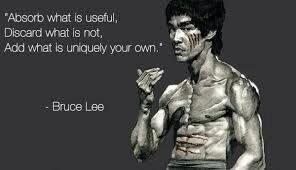Main Menu
Latest Blog Entry
User login
Strength and conditioning coaching course reflections
“Plyometricky: an exercise that purports to be elastic, but is performed slowly”
 a new phrase coined last week on the level 2 Coaching Strength and Conditioning for Sport at Oxford Brookes University.
a new phrase coined last week on the level 2 Coaching Strength and Conditioning for Sport at Oxford Brookes University.
The candidates came up with that term when we were discussing the myriad of “power” exercises that are just slow jumps.
Any time you add weight to a movement (or height in the case of depth jumps) you are SLOWING it down. Taken to an extreme and the stretch shorten cycle (SSC) is absent and instead you get an eccentric contraction, an isometric pause and then a concentric action to rejump.
That may be ok for certain actions, but be clear what you are trying to achieve. We did this series of pliometric drills outside to emphasise the need for speed.
Models of training came up a lot on this course: speed, agility, strength, LTAD, endurance. I was quoting a lot of good coaches who had come up with a system (or model) of training that worked for them.
 When I started out as a coach, I was using random bits of stuff from everywhere. I also relied heavily on “what I have done in training“.
When I started out as a coach, I was using random bits of stuff from everywhere. I also relied heavily on “what I have done in training“.
Now, I have a decent framework from which I adapt according to the athlete or the sport in front of me.
This helps in planning and progression.
However, one of the candidates said “you’re about mobility not stretching”. I am not “about” anything! I want what works (why stretch?). It is important that we avoid becoming slaves to an ideology or have a framework that is inflexible.
More dialogue, less monologue
Myself and Andy Ellis assessed the previous course’s candidates on Friday. Nerves get the better of even the most experienced coach. If you are talking incessantly and demonstrating at the same time, how much can your athletes learn?
Coaching groups is different from coaching individuals: positioning, vocal cues, observing many people at once and engaging everyone is hard work.
Silent demo, 1 coaching cue, observe, ask a question, athlete demo, observe, repeat.
There were some really good examples of practice and progression in the practical speed and agility sessions.
- well planned.
- had clear progressions.
- started with simple drills to more complex/ random drills.
- had the athletes asking questions or making observations without being prompted.
The theory paper proved simple for all of those who had done the Level 1 course previously. Those who had prepared and revised from the syllabus also passed.
The take home message?
Clear aims and purpose, plus proper preparation, leads to a successful outcome.
Well done to all concerned. I am looking forward to working with these coaches in the future.
Further reading:
- How to pass a strength and conditioning coaching course
- 4 steps to planning an agility session
Client Testimonials
 Blundells School
Blundells School
James has a huge breath and depth of knowledge on fitness issues. He is able to implement this knowledge into a practical course both making the task of fitness and conditioning both different and interesting from other fitness training that most are familiar with. He understands the safety issues when dealing with young adults strength and conditioning programmes. Programmes he sets are tailored to the individual needs of the group. There was a huge amount of progress made with some of these individuals in terms of their understanding of fitness and their own fitness levels.
More

